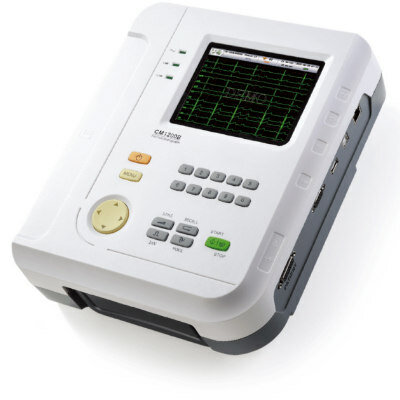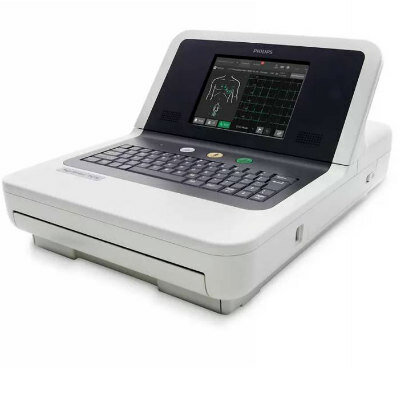New Model Predicts 10 Year Breast Cancer Risk
|
By HospiMedica International staff writers Posted on 05 Sep 2023 |

Breast cancer screening is a vital tool against the deadly disease, yet it faces its share of challenges. Although it reduces breast cancer-related deaths, it also has the potential to detect non-harmful tumors (overdiagnosis), leading to unnecessary treatments. This not only adversely affects some women but also drives up healthcare costs unnecessarily. 'Risk-based screening' is a strategy aimed at customizing screening approaches based on an individual's risk profile, aiming to maximize benefits and minimize drawbacks. Tailoring screening programs based on individual risks was recently identified as a way to refine screening strategies. Presently, most risk-based breast screening models estimate a woman's risk of being diagnosed with breast cancer. However, not all breast cancers are fatal, and the risk of diagnosis doesn't always align with the risk of death post-diagnosis. Now, researchers have devised a new model that accurately predicts a woman's likelihood of both developing and then succumbing to breast cancer within a decade.
The new model developed by a team of researchers at University of Oxford (Oxford, UK) predicts a woman's 10-year combined risk of breast cancer development and subsequent mortality. The aim is to identify women at the highest risk of deadly cancers in order to enhance the effectiveness of screening programs. Such high-risk individuals might be encouraged to initiate screening earlier, receive more frequent screenings, or undergo different types of imaging. This personalized strategy not only has the potential to reduce breast cancer fatalities but also avoid unnecessary screening for women with lower risk. Women with an elevated risk of deadly cancer could also be considered for preventive treatments against the development of breast cancer.
The research team explored four distinct modeling techniques to predict breast cancer mortality risk. Two followed conventional statistical methodologies, while the other two harnessed machine learning, a branch of artificial intelligence. All models incorporated identical data types, including age, weight, smoking history, family history of breast cancer, and hormone therapy (HRT) usage. The models underwent evaluation for their overall predictive accuracy, spanning various women's groups with diverse characteristics such as different age brackets and ethnic backgrounds. An approach called 'internal-external cross-validation' was employed. This method involves dividing the dataset into structurally distinct segments, based on factors like region and time frame, to assess the model's adaptability across different scenarios. The outcomes revealed that a statistical model constructed using 'competing risks regression' outperformed the rest. This model demonstrated the highest accuracy in predicting which women would develop and face breast cancer mortality within a 10-year span. The machine learning models displayed comparatively lower accuracy, particularly for diverse ethnic women's groups.
“This is an important new study which potentially offers a new approach to screening. Risk-based strategies could offer a better balance of benefits and harms in breast cancer screening, enabling more personalized information for women to help improve decision making,” said University of Oxford Professor Julia Hippisley-Cox. “Risk based approaches can also help make more efficient use of health service resources by targeting interventions to those most likely to benefit.”
Related Links:
University of Oxford
Latest AI News
- AI-Powered Algorithm to Revolutionize Detection of Atrial Fibrillation
- AI Diagnostic Tool Accurately Detects Valvular Disorders Often Missed by Doctors
- AI Tool Accurately Predicts Cancer Three Years Prior to Diagnosis
- Ground-Breaking Tool Predicts 10-Year Risk of Esophageal Cancer
- AI Tool Analyzes Capsule Endoscopy Videos for Accurately Predicting Patient Outcomes for Crohn’s Disease
Channels
Critical Care
view channel
Deep-Learning Model Predicts Arrhythmia 30 Minutes before Onset
Atrial fibrillation, the most common type of cardiac arrhythmia worldwide, affected approximately 59 million people in 2019. Characterized by an irregular and often rapid heart rate, atrial fibrillation... Read more
Breakthrough Technology Combines Detection and Treatment of Nerve-Related Disorders in Single Procedure
The peripheral nervous system (PNS) serves as the communication network that links the brain and spinal cord to every other part of the body. It consists of two parts: the somatic nervous system, which... Read moreSurgical Techniques
view channel
Hydrogel-Based Miniaturized Electric Generators to Power Biomedical Devices
The development of engineered devices that can harvest and convert the mechanical motion of the human body into electricity is essential for powering bioelectronic devices. This mechanoelectrical energy... Read moreWearable Technology Monitors and Analyzes Surgeons' Posture during Long Surgical Procedures
The physical strain associated with the static postures maintained by neurosurgeons during long operations can lead to fatigue and musculoskeletal problems. An objective assessment of surgical ergonomics... Read more.jpg)
Custom 3D-Printed Orthopedic Implants Transform Joint Replacement Surgery
The evolving field of 3D printing is revolutionizing orthopedics, especially for individuals requiring joint replacement surgeries where traditional implants fail to provide a solution. Although most people... Read more
Cutting-Edge Imaging Platform Detects Residual Breast Cancer Missed During Lumpectomy Surgery
Breast cancer is becoming increasingly common, with statistics indicating that 1 in 8 women will develop the disease in their lifetime. Lumpectomy remains the predominant surgical intervention for treating... Read morePatient Care
view channel
Surgical Capacity Optimization Solution Helps Hospitals Boost OR Utilization
An innovative solution has the capability to transform surgical capacity utilization by targeting the root cause of surgical block time inefficiencies. Fujitsu Limited’s (Tokyo, Japan) Surgical Capacity... Read more
Game-Changing Innovation in Surgical Instrument Sterilization Significantly Improves OR Throughput
A groundbreaking innovation enables hospitals to significantly improve instrument processing time and throughput in operating rooms (ORs) and sterile processing departments. Turbett Surgical, Inc.... Read more
Next Gen ICU Bed to Help Address Complex Critical Care Needs
As the critical care environment becomes increasingly demanding and complex due to evolving hospital needs, there is a pressing requirement for innovations that can facilitate patient recovery.... Read moreGroundbreaking AI-Powered UV-C Disinfection Technology Redefines Infection Control Landscape
Healthcare-associated infection (HCAI) is a widespread complication in healthcare management, posing a significant health risk due to its potential to increase patient morbidity and mortality, prolong... Read moreHealth IT
view channel
Machine Learning Model Improves Mortality Risk Prediction for Cardiac Surgery Patients
Machine learning algorithms have been deployed to create predictive models in various medical fields, with some demonstrating improved outcomes compared to their standard-of-care counterparts.... Read more
Strategic Collaboration to Develop and Integrate Generative AI into Healthcare
Top industry experts have underscored the immediate requirement for healthcare systems and hospitals to respond to severe cost and margin pressures. Close to half of U.S. hospitals ended 2022 in the red... Read more
AI-Enabled Operating Rooms Solution Helps Hospitals Maximize Utilization and Unlock Capacity
For healthcare organizations, optimizing operating room (OR) utilization during prime time hours is a complex challenge. Surgeons and clinics face difficulties in finding available slots for booking cases,... Read more
AI Predicts Pancreatic Cancer Three Years before Diagnosis from Patients’ Medical Records
Screening for common cancers like breast, cervix, and prostate cancer relies on relatively simple and highly effective techniques, such as mammograms, Pap smears, and blood tests. These methods have revolutionized... Read morePoint of Care
view channel
Critical Bleeding Management System to Help Hospitals Further Standardize Viscoelastic Testing
Surgical procedures are often accompanied by significant blood loss and the subsequent high likelihood of the need for allogeneic blood transfusions. These transfusions, while critical, are linked to various... Read more
Point of Care HIV Test Enables Early Infection Diagnosis for Infants
Early diagnosis and initiation of treatment are crucial for the survival of infants infected with HIV (human immunodeficiency virus). Without treatment, approximately 50% of infants who acquire HIV during... Read more
Whole Blood Rapid Test Aids Assessment of Concussion at Patient's Bedside
In the United States annually, approximately five million individuals seek emergency department care for traumatic brain injuries (TBIs), yet over half of those suspecting a concussion may never get it checked.... Read more
New Generation Glucose Hospital Meter System Ensures Accurate, Interference-Free and Safe Use
A new generation glucose hospital meter system now comes with several features that make hospital glucose testing easier and more secure while continuing to offer accuracy, freedom from interference, and... Read moreBusiness
view channel
Johnson & Johnson Acquires Cardiovascular Medical Device Company Shockwave Medical
Johnson & Johnson (New Brunswick, N.J., USA) and Shockwave Medical (Santa Clara, CA, USA) have entered into a definitive agreement under which Johnson & Johnson will acquire all of Shockwave’s... Read more














